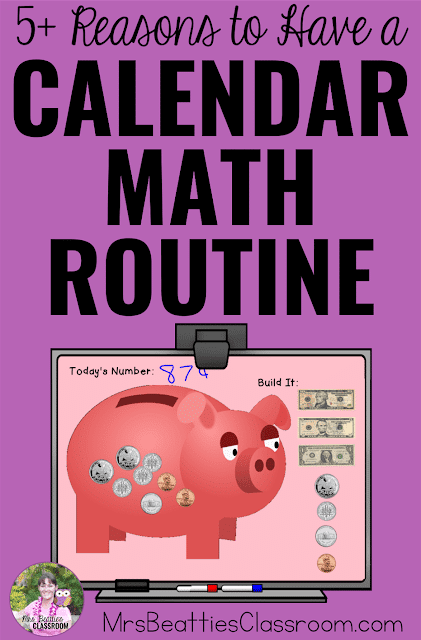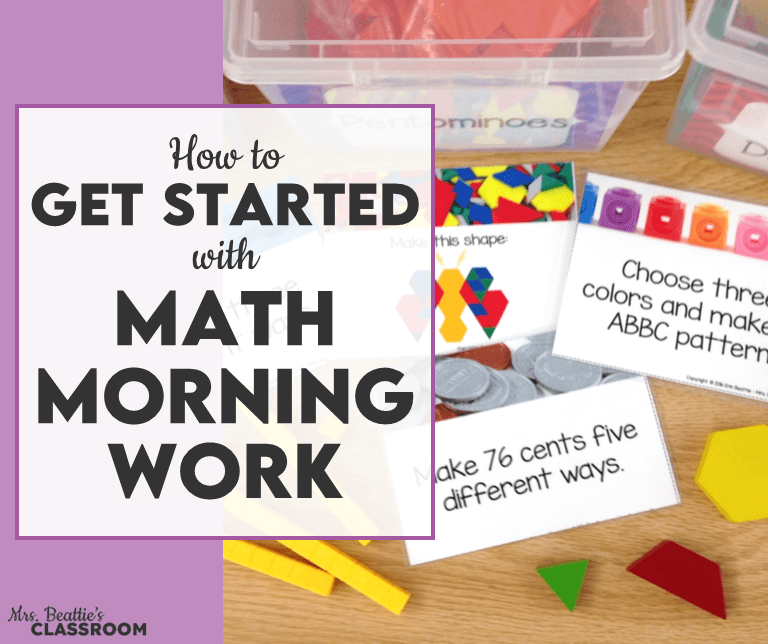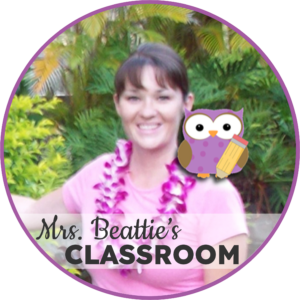Easily spiral important primary math concepts using a calendar math routine in your classroom. It is easier than you think!
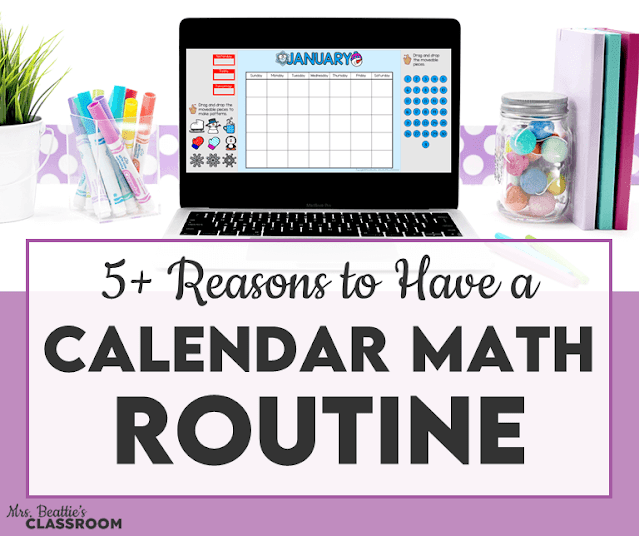
Several years ago, I had a 2/3 combined class with more second-graders than third-graders and quite a few students with special education needs.
I felt like there were gaps to close.
I created an interactive Calendar Math routine that engaged my students, excited them about math, and took the prep work out of our math warm-ups for the day.
What does daily calendar math look like?
This post contains images of my original Calendar Math resource for the SMART Board. Scroll to the bottom of this post to see a new and improved 2020 version of my calendar resource for Google Slides and PowerPoint!

On the calendar page itself, we examine a wide variety of skills. We practice knowing the days of the week in the right order, counting patterns, ordinal numbers, patterning with graphics, addition and subtraction, and concepts of time.
Here’s an example of what a typical month might look like:
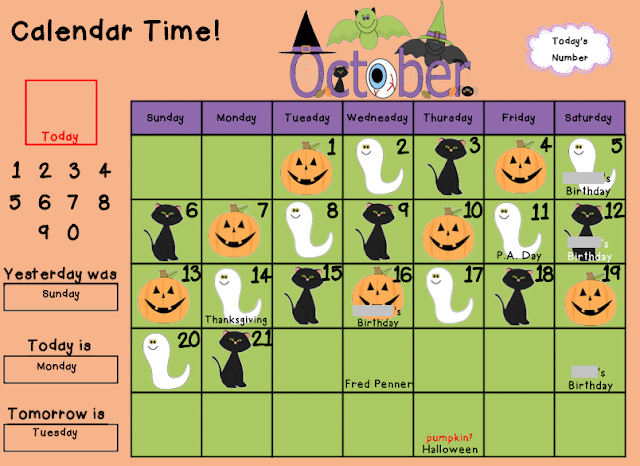
Days of the Week
We begin with a days-of-the-week song and then quickly discuss the concepts of today, yesterday, and tomorrow. Most of my students have a solid recognition of the days of the week, but there are usually a few who need to consolidate this skill.
Ordinal Numbers
Next, we identify the date by dragging the date digits from the number bank on the left into the calendar space.
Patterning
I have the next clip art image already in place for the day before we begin.
At the beginning of the month, the students are eager to guess the pattern. We discuss the “core” of a pattern and how we need to see the core repeat before we can be sure there is a pattern.
Once the pattern is established and the children recognize the core, they begin to predict when we might see a particular shape again or which shape will appear on a given day.
They are encouraged to use strategies other than simply extending the pattern. In the example above, when the students noticed the diagonal trend of the images, they predicted that Halloween would have a pumpkin. They could see there would be a ghost on Tuesday of that week, and the pumpkin would happen two days later. Love it!!
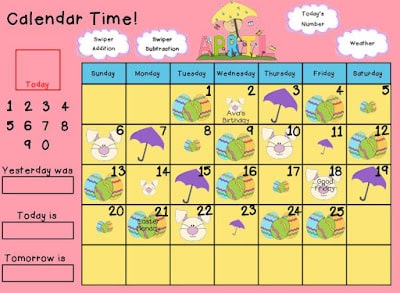
As the basic patterning became easy for my students, I added a second pattern. They now have to identify the changing attributes – size and shape – and the different cores of these patterns. And they can do it!
Addition and Subtraction
Partway through the year, I introduced the possibility of using subtraction to find the difference between two dates on our calendar.
We looked at the birthday on the 16th and the birthday on the 5th of the month. We found out how many days were between the two by using subtraction.
Concepts of Time
With practice, my students begin to recognize the relationship between days and weeks, weeks and months. They love using this knowledge to help with telling the number of days between events on our calendar.
They no longer simply count all the days but instead use what they know about a jump down on the calendar to add 7 days.
Why the SMART Board?
You can do all of this learning with any calendar, but I love the interactive nature of the SMART Board and how it engages my students!
I have also included several calendar math pages in my interactive resource and provided a printable version that I sometimes have students complete independently.
These are an excellent review of place value and representing numbers in a variety of forms: word form, expanded, money, and base ten blocks to name a few.
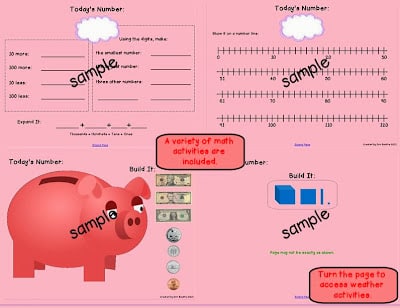
On one of the last slides, we count the number of days we’ve been in school:
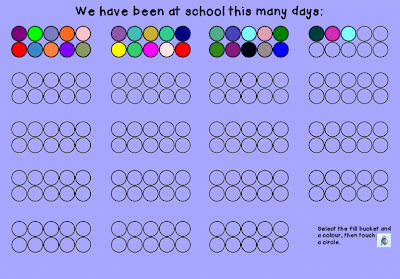
Using this page, we practice skip-counting patterns—2s, 5s, and 10s. This is one area in which I’ve seen significant improvement.
The students can clearly see how skip-counting makes counting the number of days easier!
They are also beginning to recognize when 2s are most effective or when 5s or 10s would be a better choice!
What if I don’t have a SMART Board?
I now have a new and improved calendar resource for Google Slides and PowerPoint available! It has some new additions beyond those features seen above, which you can see in this video:

How can I get started?
This fun, interactive resource is ready and waiting for you in my TPT store! The original resource is available in three levels – kindergarten, primary, and upper primary – and I have English, French, and Australian versions, too!
Take a look at the SMART Board versions right here:
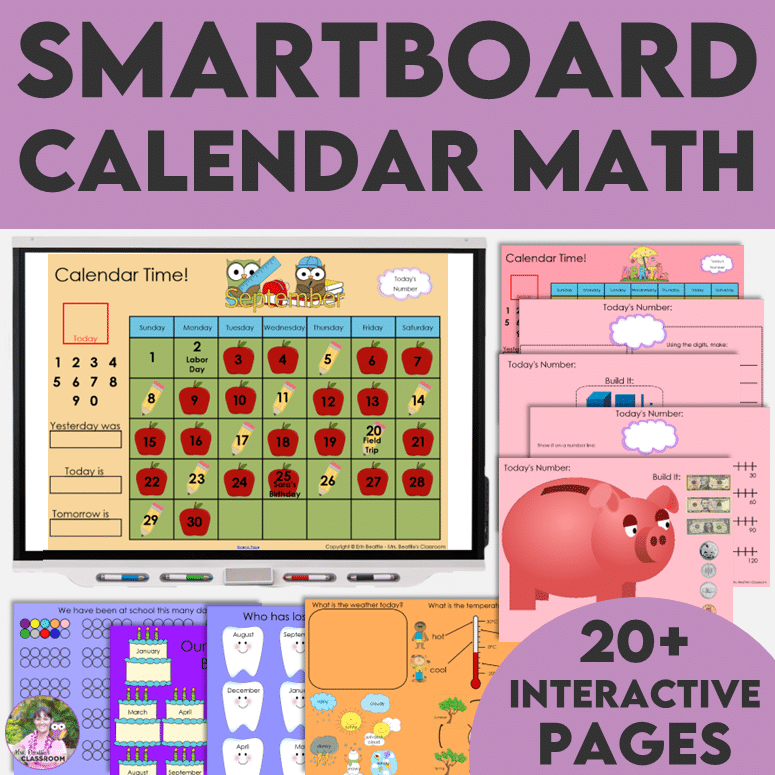
And check out the 2020 updated version right here, available in English and French:
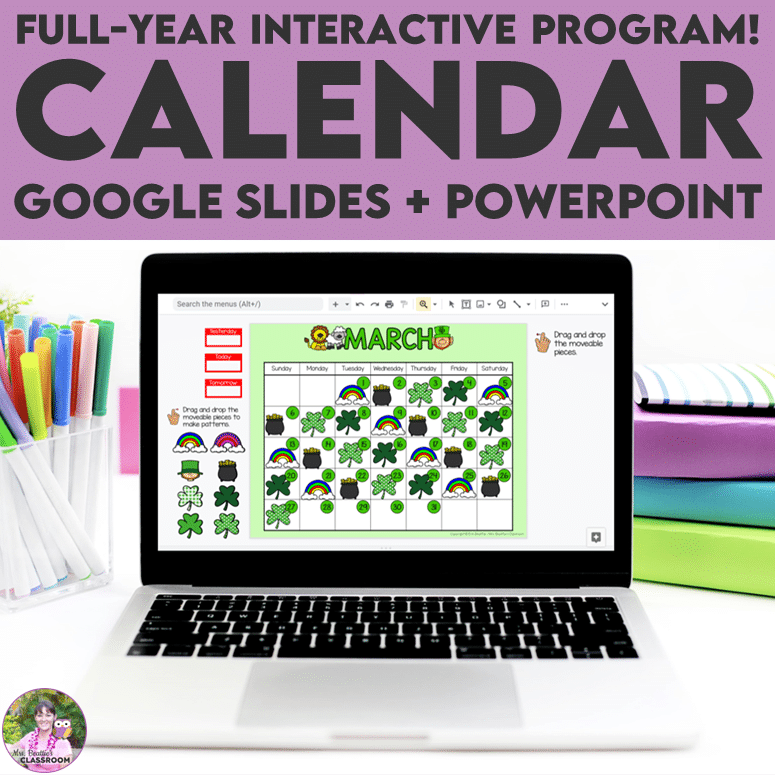
You might also be interested in my tips for running a successful calendar time! Check out this post:

You might also be interested in some other great ways to start your day! Check out this top post:
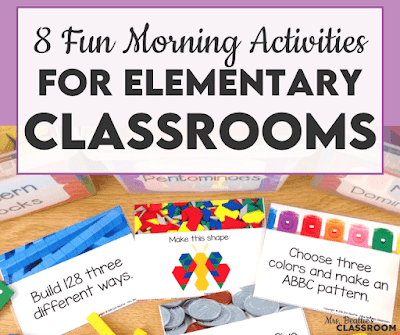
If you have enjoyed this post, please share it with your friends and colleagues on Facebook or pin it on Pinterest:
